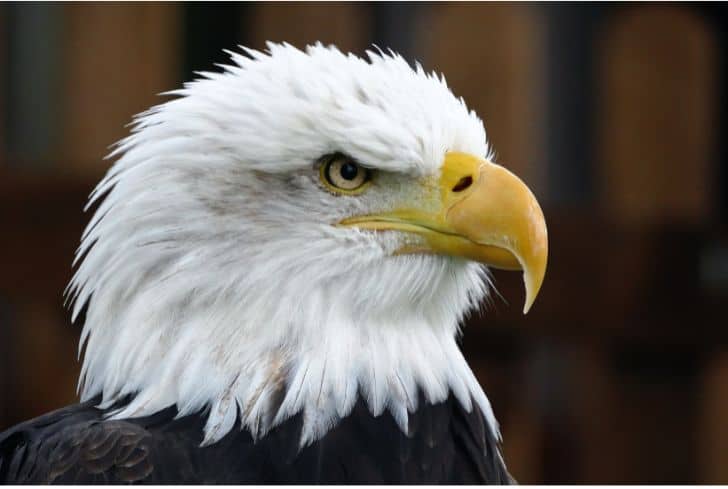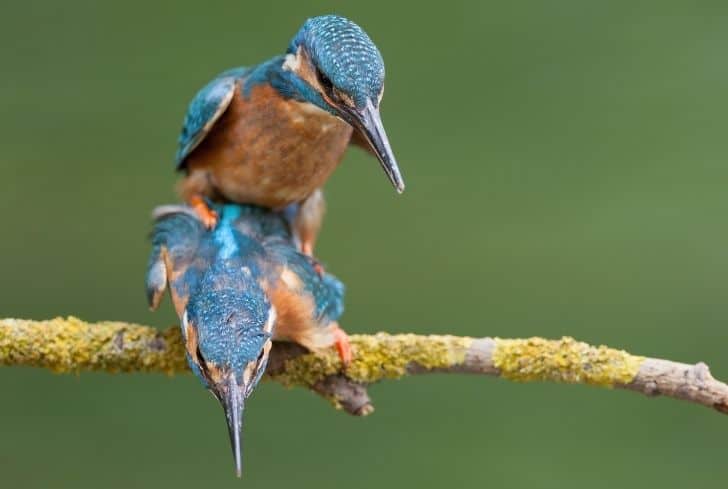15 Exceptional Water Diving Birds (With Pictures)

To watch birds dive into the water and catch prey in the most stunning styles is a treat everyone would like to enjoy in their lifetime.
But what seems an effortless task for these water-diving birds, takes incredible techniques and strategies facilitated by their unique features.
Curious to learn about these exceptional birds?
In this article, we’ve compiled a list of 15 exceptional water diving birds that show this unique behavior to provide us with a great, fantastic birdwatching experience. You’ll also learn how these birds pull this technique off.
Let’s dive in.
Types of Water Diving Birds
To plunge into the water, birds can use their feet, wings, or a combination of incredible skills. So we’ve classified them into three categories;
- Birds that use acrobatic skills to dive
- Wing-propelled water birds
- Feet-propelled water birds
Birds that use acrobatic skills to dive
Some birds use plunge-diving skills, helping them transition from the air with a high-speed dive into the water headfirst.
To facilitate this, the birds have notable beaks, necks and adaptable wings, which can shift shapes seamlessly and automatically during flight. They also have narrower and thinner rhamphotheca (keratin covering on their beaks)
1. Terns
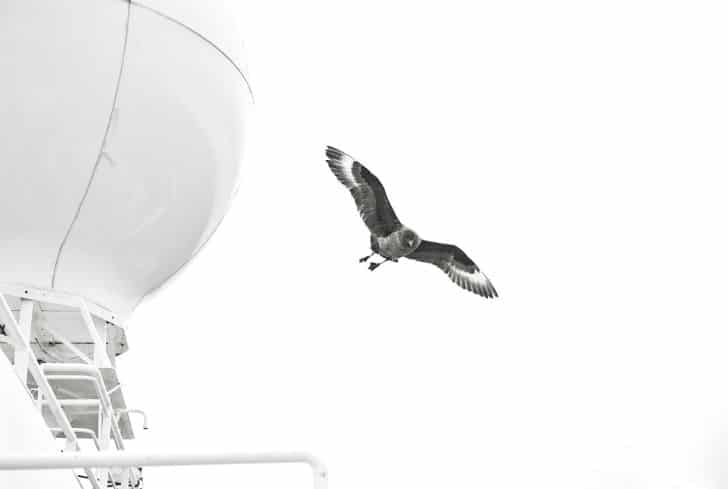
Terns are seabirds from the Laridae family that live near rivers and seas.
There are about 40 species of terns, and most of them are expert divers, preferring to plunge into the water to catch their food, mainly small fish.
Terns have unique adaptations to afford them the luxury of doing what is unthinkable among non-divers.
The birds are slender and lightweight, allowing them to fly some distance above the water from where they plunge, facilitated by narrow wings and long, forked tails. They also have long bills to make the most of their plunging – although not all of their plunges are successful.
What’s more, to prevent carbon dioxide build-up, which can lead to death, the birds store more oxygen and have greater blood volume.
Where to find the terns; worldwide
2. Ospreys

Also called fish hawks or sea hawks (they resemble hawks), ospreys are large raptor birds found in large numbers near major coastal estuaries with a large number of fish.
Unlike other plunge-diving birds, ospreys dive feet first and have their unique adaptations to do so.
The birds often fly about 10-40 meters above the water surface, and using their sharp eyesight, they can detect fish underwater. The birds then hover momentarily before plunging into the water at high speeds of about 50mph, with their feet first, and in most cases, they submerge their entire bodies.
Ospreys are among exceptional fishers, with studies showing the birds have a success rate of about 70%. That’s possible because the birds can adjust their flight angles to counteract fish movements due to refraction.
Where to find ospreys; in every continent except Antarctica
3. Kingfishers

Kingfishers are small to medium-sized bright-colored birds that live deep in the forests but near small rivers and ponds.
While some kingfishers feed on insects, others prefer fish and have unique adaptations to fit their lifestyle.
Unlike ospreys and terns, who first fly distances above the water before diving in, these birds usually do their hunting from trees. Perched on exposed tree branches, a kingfisher can spot fish from a distance, from where it swoops swiftly to snatch its target and then returns again.
Kingfishers are such successful hunters, combining their powerful flight with incredible coordination, and are not distracted by light refraction, which distorts the location of the prey.
Where to find kingfishers; most species live in tropicals of Africa, Asia, and Oceania.
4. Gannets
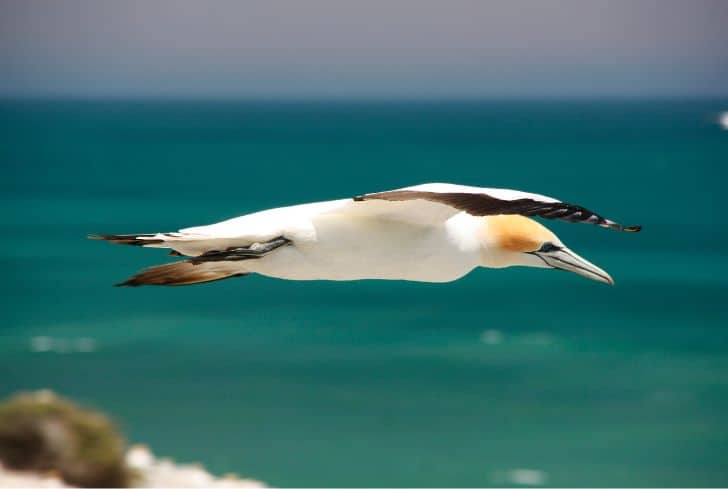
Gannets are large seabirds that live in colonies on offshore islands with cliffs.
These large seabirds are exceptional divers, plunging into the water with incredible speeds of about 60mph from heights of about 30 meters.
The birds have unique adaptations that enable the garnets to achieve such feats.
Their nostrils are only located inside the mouth, allowing them to strike the water at incredible speeds without facing any breathing difficulties.
Also, garnets have bubble-like air sacs in the chest, under the skin, and on the face. To alleviate the impact with which the birds strike the water.
And to measure and judge distances accurately and detect the location of prey underwater, the birds have eyes strategically placed higher enough in the face to allow binocular vision.
Where to find garnets; temperate seas of Southern Australia, Africa, and New Zealand
5. Boobies
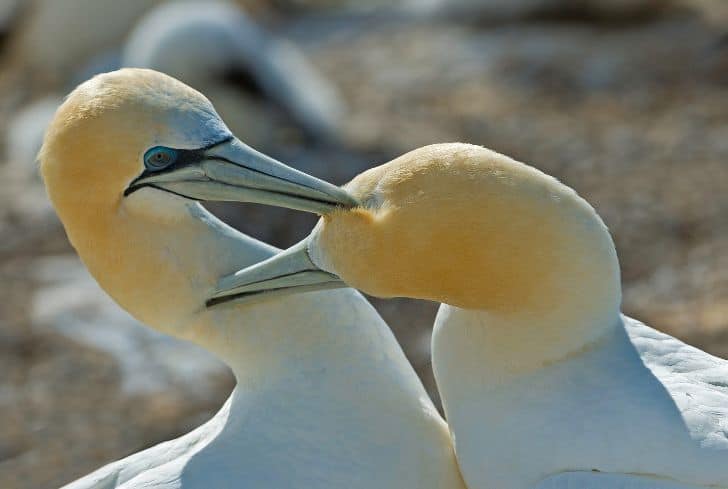
Boobies are unwary and clumsy seabirds closely related to the garnets.
Like their cousins, boobies can fly far higher above the water surface but are very keen on schools of fish that make their diet.
When an opportunity comes, the birds dive into the water at as high speeds as 50mph. It’s an effortless task as the birds fold their wings against the bodies before plunging. The air sacs’ placement under the skin helps the birds cushion their impact with the water. If they miss their target in the first attempt, boobies don’t give up as they can pursue fish as deep as 300 feet.
Boobies can also choose to dive into the water from a sitting position while resting on the water surface.
Where to find the boobies; mostly in Galapagos Islands
6. American dipper
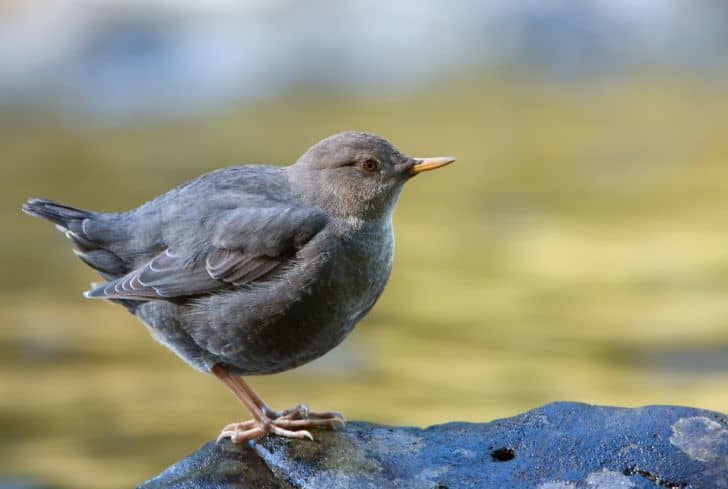
The American dipper is the smallest bird on our list but probably the most entertaining to watch.
With their food consisting of everything aquatic, the songbird is usually found near water bodies, including lakes, streams, and rivers. They like perching on tree branches but never sit still – they can bob more than 50 times.
When an opportunity comes, the birds plunge into the water at average speeds, but it’s their skill underwater, thanks to their anatomy, which is phenomenal.
The stocky songbirds can dive (in a flying fashion) against the current, thanks to their powerful wings and waterproof feathers for insulation. Furthermore, their blood carries extra oxygen to survive underwater.
7. American black duck
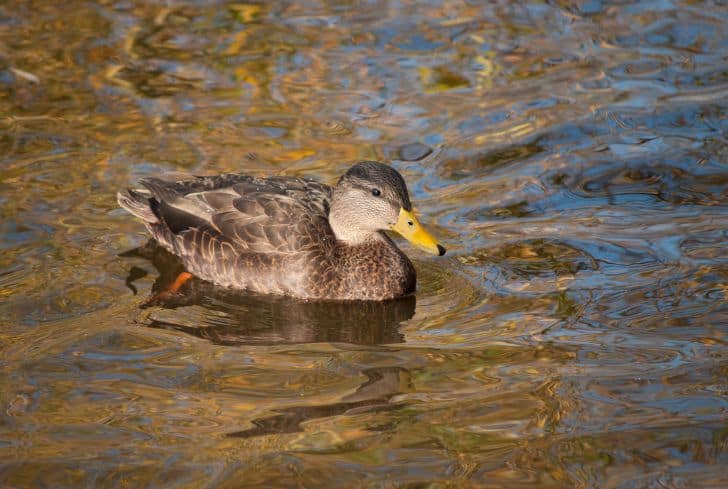
The American black duck is a large, heavy, dabbling duck, usually between 720-1640 grams.
The black duck primarily gets food by grazing on land and dabbling in shallow waters.
However, with all the weight, the magnificent birds can run across the water and gather enough speed to take off and launch a flight. Then, like other plunge-diving birds, the duck dives into the water in a captivating style. But it doesn’t pull off this behavior often, only when fleeing predators and sometimes to find food.
Wing-propelled birds
Wing-propelled birds have shorter wings, unlike other birds, as they’re experts at swimming and diving but not flying.
It’s the fastest technique that has enabled the birds to become very accomplished divers, with some able to dive over 100 meters below the water surface.
8. Diving petrels

Diving petrels are small, stocky seabirds that like flying low but fast over the water.
The petrels prefer hunting just above the water surface, using their short, stubby wings, which they fold to resemble paddles to help propel them underwater in pursuit of small fish, squid, and krill.
But other than the short narrow wings, the birds have other adaptations for diving and obtaining their prey. Their nostrils project upward instead of forward to the birds’ breath normally when underwater. They’re also adapted to reduce body heat when diving.
Where to find diving petrels; southeast Australia and Tasmania Islands, and New Zealand Island
9. Puffins
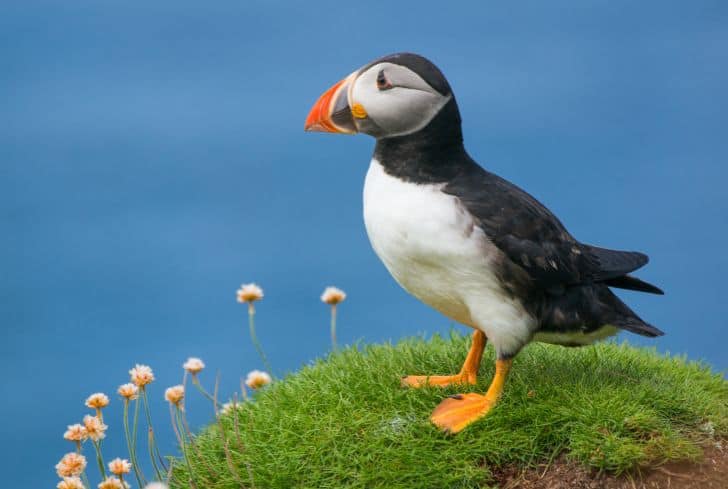
Puffins are small, stocky seabirds from the auk family.
Although the birds do not go past 100 feet below the water surface, they are professional divers that spend most of their time in the open sea with the help of their waterproof feathers that help them keep warm while floating.
When diving, the birds flap their short wings to appear as if they are flying, while the webbed feet help steer them forward.
Although small, puffins are exceptional fishers who can hold more than ten fish with their bills at once.
Where to find puffins; coastal Maine in the US, Lundy in England, Nuuk in Greenland
10. Penguins

Penguins are a group of 18 semi-aquatic flightless birds.
Interestingly, the flightless birds have wings, useless on land but crucial weapons when the birds are divided.
Able to dive depths of 200 meters, the penguins are expert divers, comparable to bird flights in the air! They have adaptations to suit the aquatic life, with their smooth plumage that preserves air to keep the birds afloat when they want to. They also have strong breast muscles to help propel the birds underwater.
The gentoo penguins are the fastest underwater birds worldwide, as they can clock high speeds up to 36 km/h, while no bird can match the emperor penguins’ diving feats of around 550 meters.
11. Shearwaters
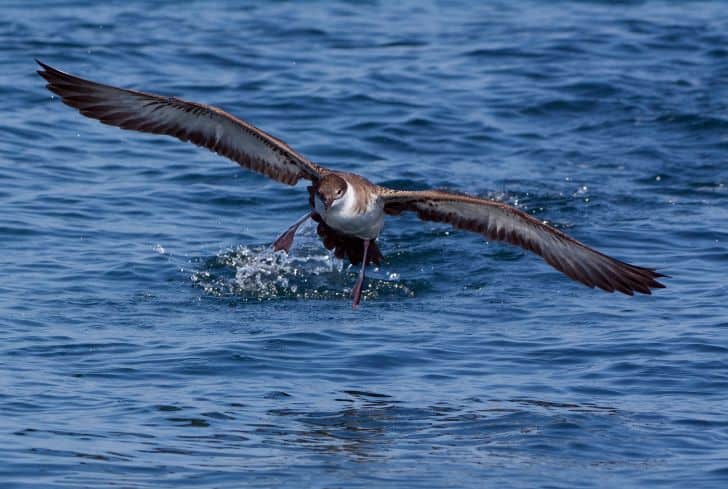
Shearwaters are medium-sized, long-distance migratory seabirds, usually seen in flocks.
Shearwaters are professional flyers taking advantage of water waves and ocean winds by employing a shearing flight technique to move far and fast with minimum effort required.
The birds’ extraordinary skills are not limited to flying. Shearwaters are exceptional swimmers, able to dive as deep as 230 feet when fishing. And when they miss their target, like boobies, they use their wings to propel them underwater and pursue their prey.
Feet-propelled birds
These birds are large with streamlined bodies to suit the aquatic environment.
While they rely on feet to propel them, the birds also fold their wings against the streamlined bodies as they dive. Their hind legs have special features to defeat underwater forces and help them dive and swim seamlessly.
12. Cormorants

Cormorants are Medium-to-large sized seabirds that live in colonies around shores and on trees and cliffs near water bodies.
Cormorants are professional propelled divers, and can go beyond 40 meters underwater and even stay submerged for up to 70 seconds. As an adaptation to the aquatic environment, the birds have webbed feet between all four toes, which they keep far back on their bodies to function as rudders and propellers. And as pursuit hunters, they call upon their relatively short wings.
When cormorants fail to snatch their target, they shamelessly run along the water again.
Where to find cormorants; Atlantic Canada and rocky shorelines in New England
13. Porchards
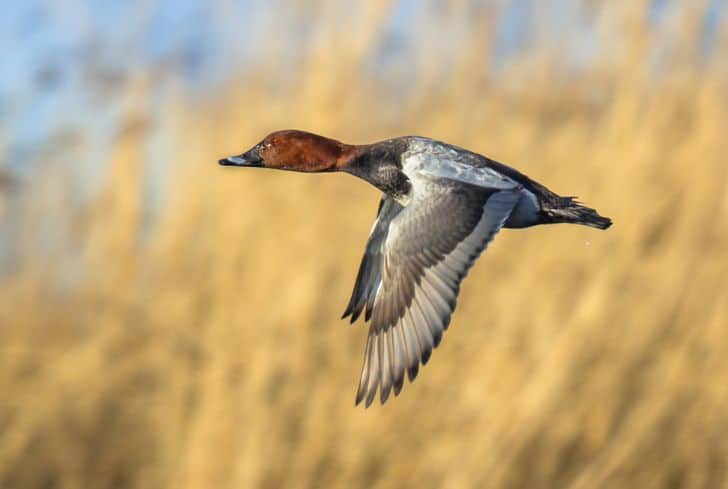
Pochards are medium-sized diving ducks with distinctive triangular-shaped heads.
Porchards feed mainly on aquatic plants, but the birds can also dive, running across the water surface, to supplement their diet.
While the webbed feet of these nocturnal birds make them awkward on land, they’re up to the task when called upon, acting as paddles to propel the birds forward.
The birds strategically keep their feet on their rear sides to move efficiently underwater. Also, they have smaller, compact wings, which lay tightly against their bodies when diving.
But because they rely only on their feet to propel them, they dive only as deep as 10 feet.
14. Grebes

Grebes are small to medium-sized freshwater aquatic birds. They also inhabit saltwater environments when migrating and during the winter.
Because of their extremely caudal legs, most grebes are rarely seen on the land, particularly the little grebes. They only come offshore for breeding purposes.
However, the birds are fantastic surface divers, thanks to their large feet with lobed toes – a unique adaptation of all birds included here. Also, the front three toes have a webbing, which experiments show acts as propellers’ hydrofoil blades.
Grebes are not exceptional divers, measured against the others on our list. But they’re up to the task for their needs – which include not only feeding but also fleeing danger. Diving is their best response.
15. Loons
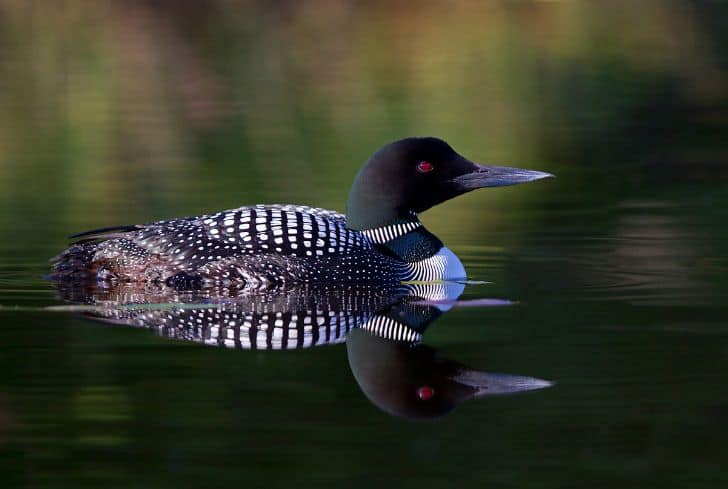
Loons are duck-sized freshwater aquatic birds you can easily confuse with cormorants if not for their distinctive calls.
Like grebes, loons dislike the idea of coming to land, except when mating or nesting, because their feet are placed at the rear end to make terrestrial movement difficult.
The birds are best at flying and are also excellent divers. They can reach depths of at least 200 feet and stay submerged for about 15 minutes.
The rear placement of feet helps loons dive and swim effortlessly, while the slender and streamlined bodies of the birds complete the task.



